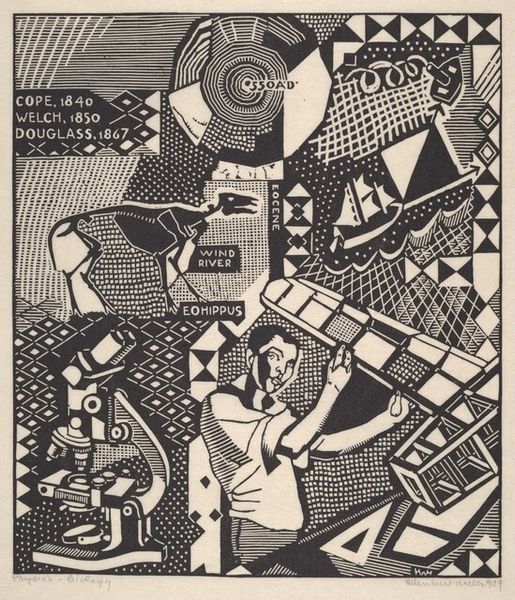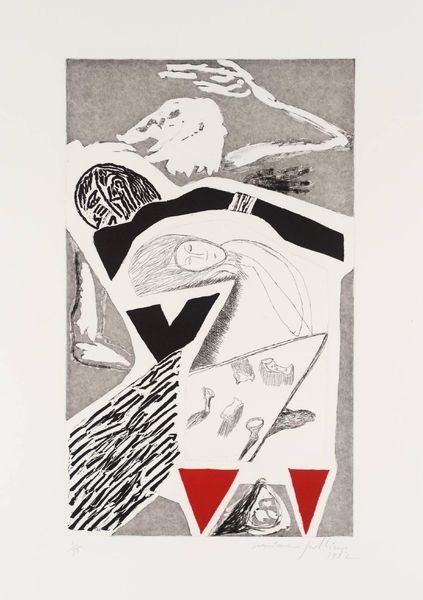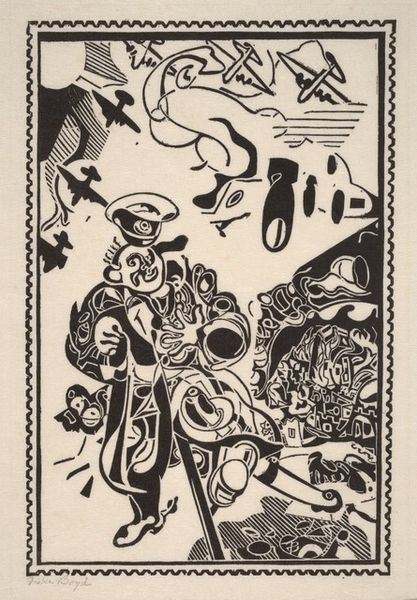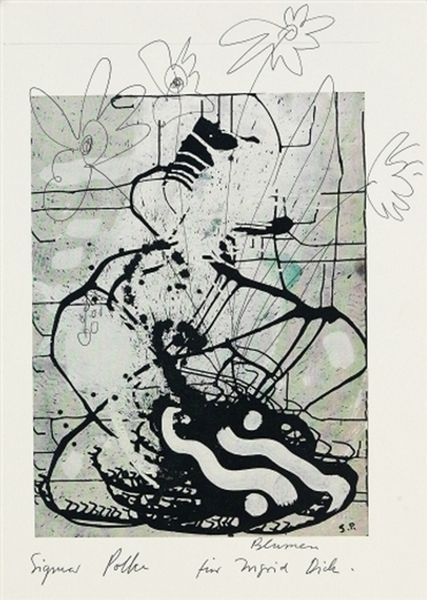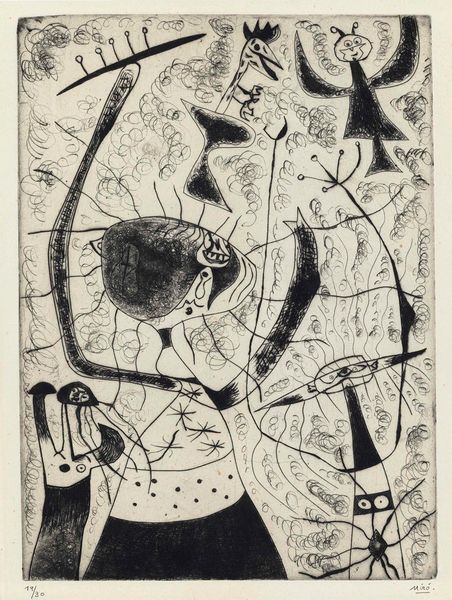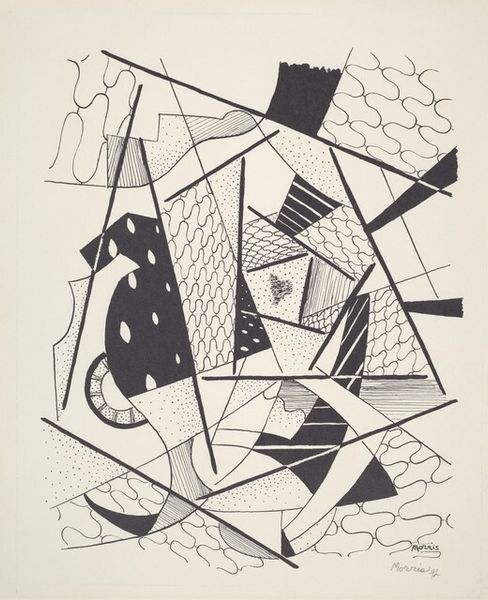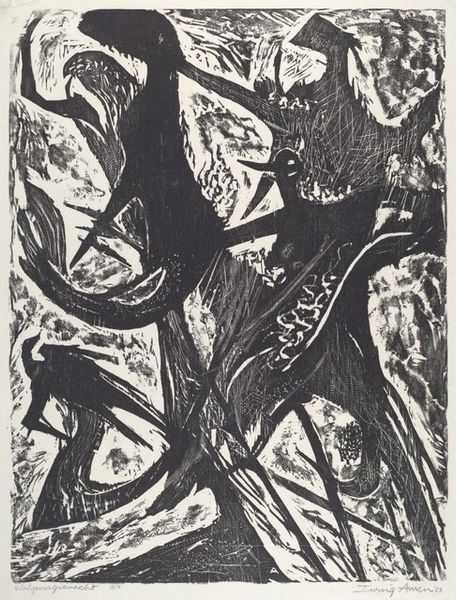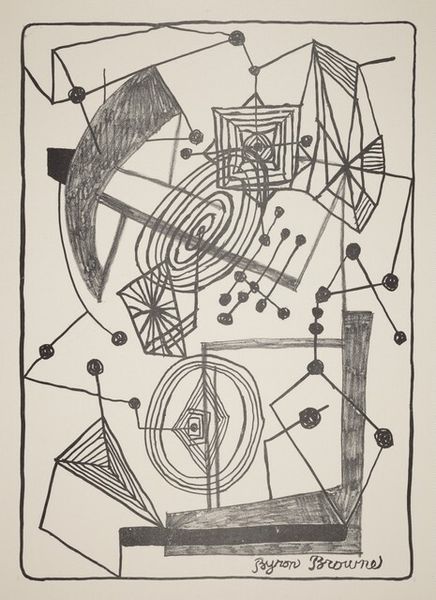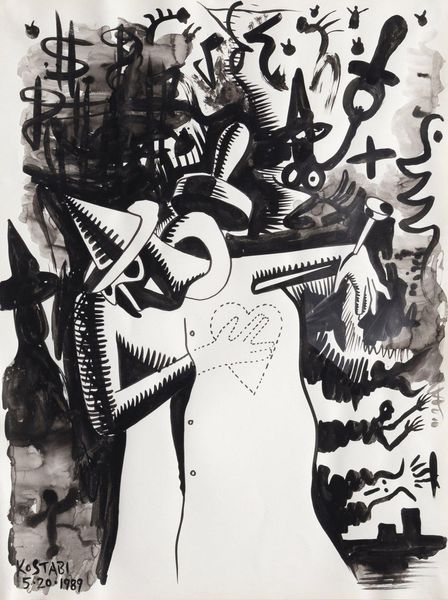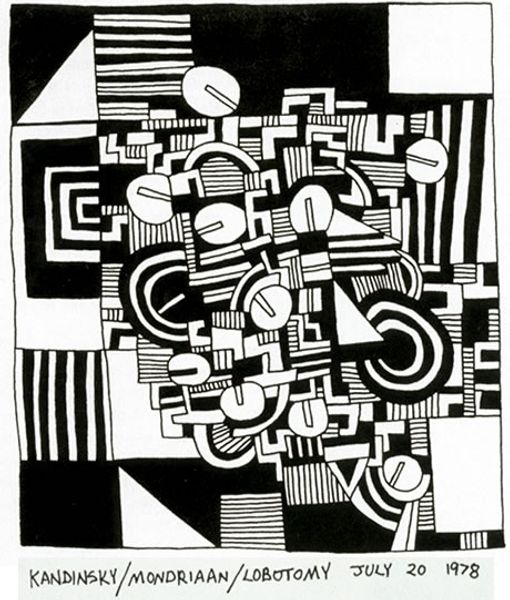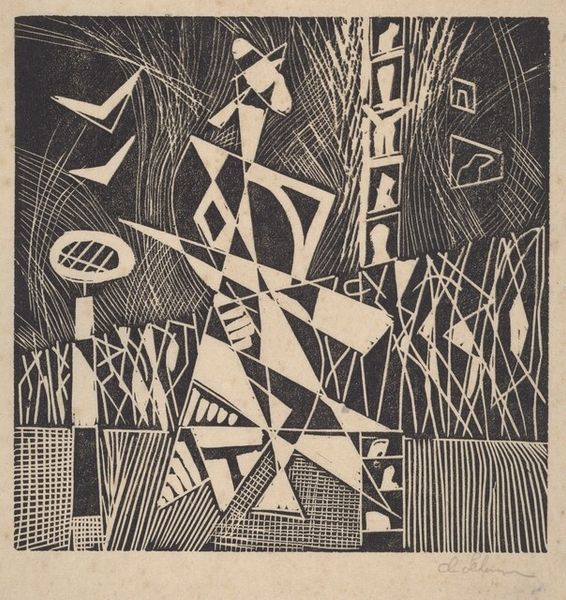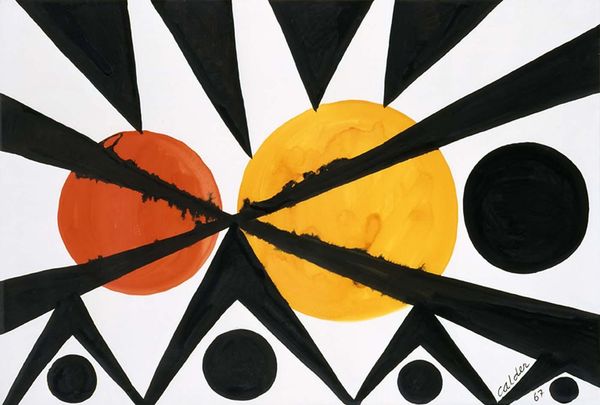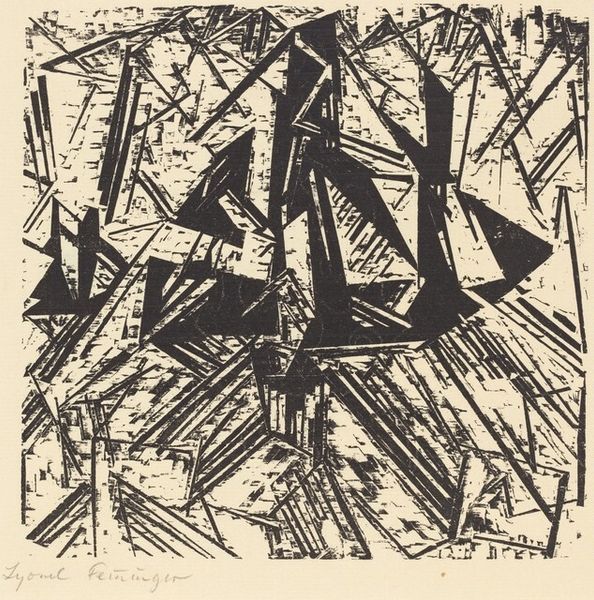
Copyright: Public Domain: Artvee
Editor: Here we have Wassily Kandinsky's "Kleine Welten VI" from 1922, a woodcut print. It’s fascinating how he's combined all these shapes. What jumps out is the tension created by the sharp angles against the more organic, flowing lines. What do you see in this piece? Curator: I find the piece a superb demonstration of Kandinsky's engagement with formalist principles. Notice how he orchestrates the relationship between positive and negative space through the stark contrast of black and white. Consider the interplay between geometric and biomorphic forms. What effect do you believe this generates? Editor: It almost feels like a controlled chaos, right? Everything’s contained within the frame, but there's so much visual information vying for attention. The lines intersect and divide the space creating a kind of organized, but chaotic visual plane. Curator: Precisely. And within that plane, observe how each form contributes to the overall composition. The weight and direction of the lines, the texture achieved through the woodcut technique – each element is carefully considered. Consider the role of the circle as both a structural device and an element laden with symbolic potential. Editor: It's interesting how you break it down into these basic formal elements. I guess I tend to look for some kind of underlying message or symbol, but maybe sometimes the visual experience itself is the message? Curator: Indeed. While context and meaning undoubtedly play a role in our understanding of art, a close examination of form reveals the artist's intentionality and skill in manipulating visual elements. The composition itself provides its own justification. Have you noticed how Kandinsky repeats particular visual "keys" throughout the image, activating echoes through form? Editor: That's true! There are smaller triangles echoing the larger shapes, like a micro-macro effect! It makes you see new details and realize there are patterns you didn't see at first glance. Curator: Analyzing form can thus cultivate a more comprehensive grasp of how visual components function, even prior to deciphering the historical aspects that shape our understanding of the piece. Editor: Thank you, it’s helped me approach this piece in an entirely new way. Curator: I too will reflect on these methods of reading forms as visual "keys", helping provide ways in and a new lens for visual works of this calibre.
Comments
No comments
Be the first to comment and join the conversation on the ultimate creative platform.
